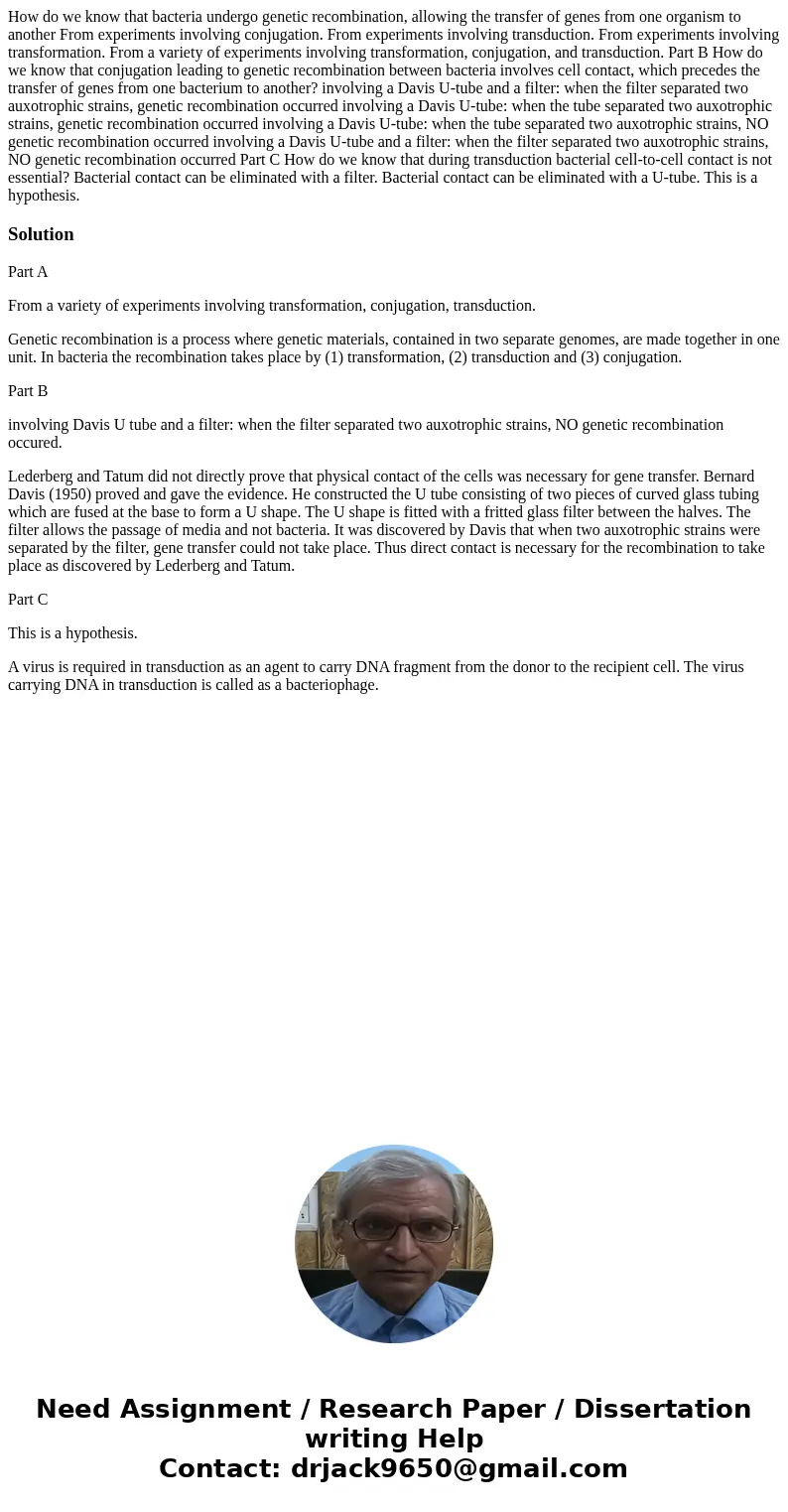How do we know that bacteria undergo genetic recombination a
Solution
Part A
From a variety of experiments involving transformation, conjugation, transduction.
Genetic recombination is a process where genetic materials, contained in two separate genomes, are made together in one unit. In bacteria the recombination takes place by (1) transformation, (2) transduction and (3) conjugation.
Part B
involving Davis U tube and a filter: when the filter separated two auxotrophic strains, NO genetic recombination occured.
Lederberg and Tatum did not directly prove that physical contact of the cells was necessary for gene transfer. Bernard Davis (1950) proved and gave the evidence. He constructed the U tube consisting of two pieces of curved glass tubing which are fused at the base to form a U shape. The U shape is fitted with a fritted glass filter between the halves. The filter allows the passage of media and not bacteria. It was discovered by Davis that when two auxotrophic strains were separated by the filter, gene transfer could not take place. Thus direct contact is necessary for the recombination to take place as discovered by Lederberg and Tatum.
Part C
This is a hypothesis.
A virus is required in transduction as an agent to carry DNA fragment from the donor to the recipient cell. The virus carrying DNA in transduction is called as a bacteriophage.

 Homework Sourse
Homework Sourse